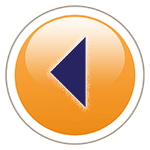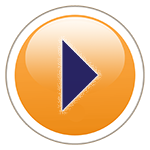Book choices for today:
I Like Music Muriel Dubois
M is for Music Kathleen Krul
Music: (first circle)
In the classroom music is very important. Most Montessori Schools have the Bells Set (nienhuis.com). They are very expensive, but so worth it! I bought a music program many years ago at a Montessori Conference called Discover Music. I like to use this in addition to the bells. I find it to be a wonderful way to teach children music notes, rhythms, the key board, etc. Today’s first circle will introduce musical instruments. I usually will then start with the Discover Music Program at the last circle and then continue following the book on different days of the week for the remainder of the year. All music lessons will be done at our last circle of the day since we will be using instruments most times and the children do get excited.
Need for lesson – Music posters, variety of instruments, Three-part Instrument Matching cards, and any other music items you would like to use. At this time of the year a brief discussion is given with instruments to expose the children to them before you start to using them during Circle Time. Later in the year, more details on instruments are learned during Orchestra Lessons.
Music 1
How many of us like music? Music has been enjoyed by people for a very very long time. There are many different kinds of music and it is found all over the world. What about instruments? Does anyone play an instrument or have them at home? There are many kinds of instruments from all over the world. Instruments can be organized into groups or kinds of instruments. One kind is called string instruments. They are called stringed because they make a sound by means of strings. Another group of instruments is called brass. These are called brass instruments because of the sounds they make through a tube along with a persons lips as they blow into the instruments. A third group of instruments are called wind instruments. These also make sounds by a persons blowing into them, often having a reed by the mouthpiece. A fourth group is called the percussion instruments. These are instruments that produce a sound when hit, shaken, or rubbed. Let’s look at these instruments and decide which group they belong to.


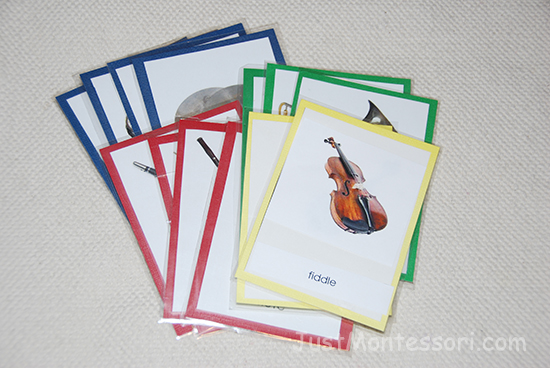
This set of instrument cards is color coded by string, percussion, wood, or brass instruments.
Additional Works:
Instrument Cards
Bells Set
Instrument Matching
Stamping Musical Notes
Kinds of Instruments – Sorting

I decided to place these instrument pictures on a piece of card stock to match which continent (same as the Montessori Continent Globe) the instrument is from. I will do this as a circle time lesson using the Hemisphere Map, as you introduce the names of the different instruments. They are great because they are often instruments that are not recognized by many children.
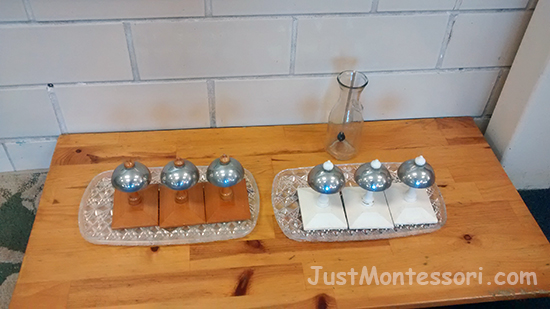
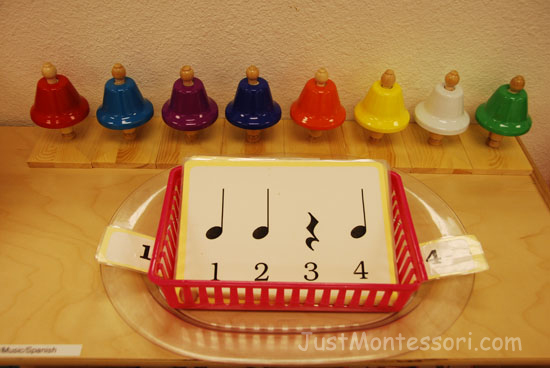
The music cards are from the music program, Discover Music.
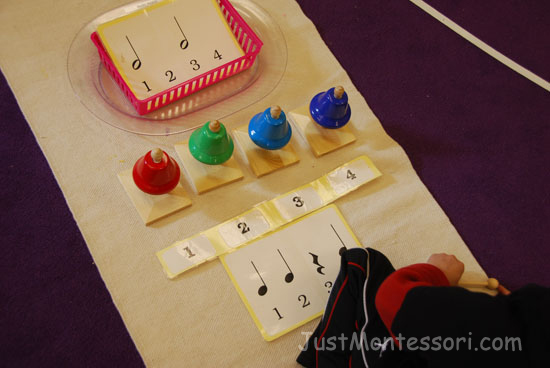
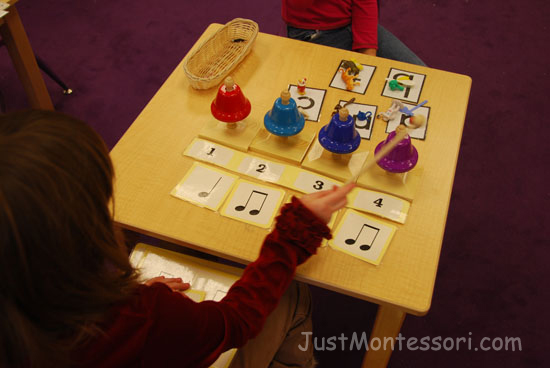
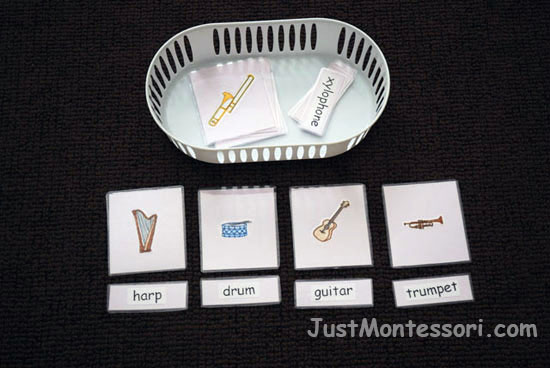
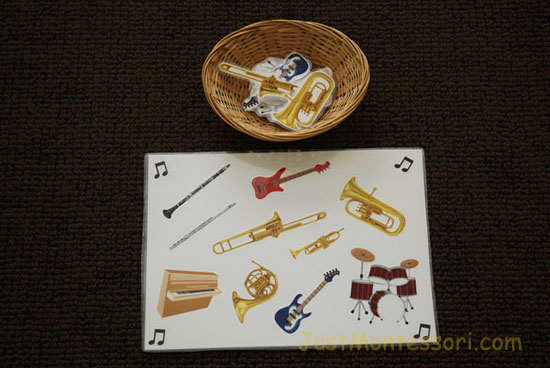
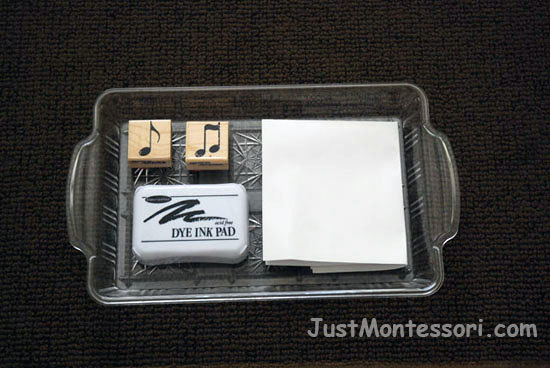

Music Continued:
Discover Music – This program will give you a step by step way to introduce music concepts to the children. She also provides art ideas to reinforce the lessons. (I can’t find this anymore, so you may have to find the next best substitute)
As you move along in the program introduce the Melody Maker instrument and any other music things you would like the children to experience. As we move along with the Discover Music Program, I will occasionally post pictures and let you know some of the things we are doing for music.
Composers – We will talk about one composer a month. On the Music Shelf in the classroom we will have the composer of the months picture and books about them. During the work period I like to play the composers music softly for background music. The composer can be highlighted during the beginning of each month by taking a little bit of circle time to introduce the composer and tell a little about them. Let the children know that during the month they will be hearing some the music they composed.
Orchestra – Include learning about the orchestra with the children. Specific lessons on the orchestra are introduced later in the school year, but remember if an interest is shown from the children, take those lessons and talk about them at that time (Weeks 21 and 22 of the Curriculum Pages).
Carnival of the Animals – A must for your music lessons. This book is a wonderful addition to any of classical music composers you may be learning about. It alone can be a great resource for exposing children to classical music. Specific lessons are found later in the school year but can be introduced if interest is shown (Weeks 34 of the Curriculum Pages).
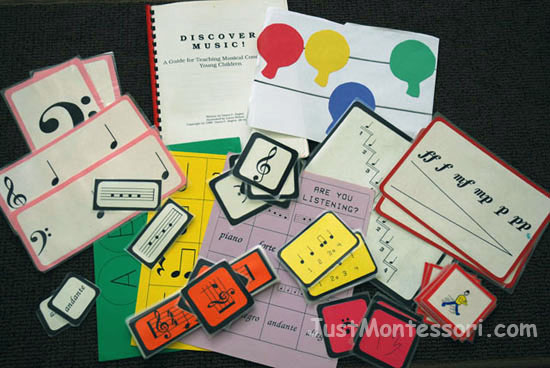

History: (second circle)
Need for lesson – A clock, watch, and a calendar.
History 1
Recently we have discovered what it means to be in the past, present, and future. When we looked at some famous artist paintings, they were painted long ago, in the past, by some famous artist. During our first circle we learned that today is ___________. That is the present, it is happening now. Soon we will be getting ready for ________ (choose an upcoming event; the season of Fall, a field trip, etc) that is the future.
How do we know that things are coming up soon, or are going to happen or have already happened? How can we know when these things will occur? We know because of time. Time continues and continues. It starts off as let’s say a minute, which then turns to an hour, then a day, then another day and another day and that adds up to a month and the months add up to a year and another year and another … it just keeps going and going and going…isn’t that amazing! Time is always happening, it is always going by. Why just today time went by. We started out today waking up and getting ready for school. We came to school and had our first circle, then work time, now we are here in the present, having this circle!
How is all this time from the past to the present counted. It is with time on a clock and a calendar. A clock keeps track of the hours in a day and the days are kept track on a calendar. We do our calendar each day and we know it changes after so many days to another month. These months continue to add up to years and years and years. As these years and years go by they make History, or the past.

Song (CD) choices for today:
Happy Mechanical Man Instruments Hap Palmer
The Instrument Song Following Directions (MacMillan)
Feel of Music Hap Palmer
Percussion Instruments Hap Palmer
Buy Weeks 1-5 PDF
-
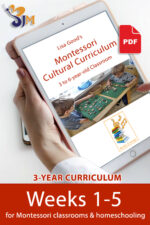 (B) Weeks 1-5$25.00
(B) Weeks 1-5$25.00

